Photos: Monster Storm Rages on Saturn
Saturn's Monster Storm Head
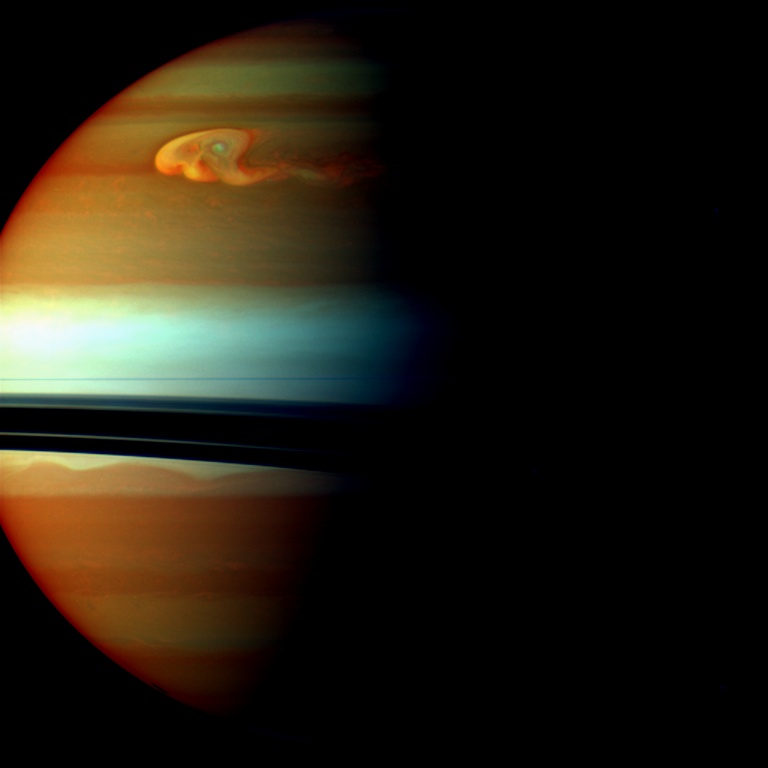
The head of Saturn's huge northern storm is well established in this view captured early in the storm's development by NASA's Cassini spacecraft in late 2010.
Saturn's atmosphere and its rings are shown here in a false color composite made from three images taken in near infrared light through filters that are sensitive to varying degrees of methane absorption. Red and orange colors in this view indicate clouds that are deep in the atmosphere. Yellow and green colors, most noticeable near the top of the view, indicate intermediate clouds. White and blue indicate high clouds and haze. The rings appear as a thin horizontal line of bright blue because they are outside of the atmosphere and not affected by methane absorption.
This view looks toward the southern, unilluminated side of the rings from just below the ringplane.
Cassini Chronicles Giant Saturn Storm
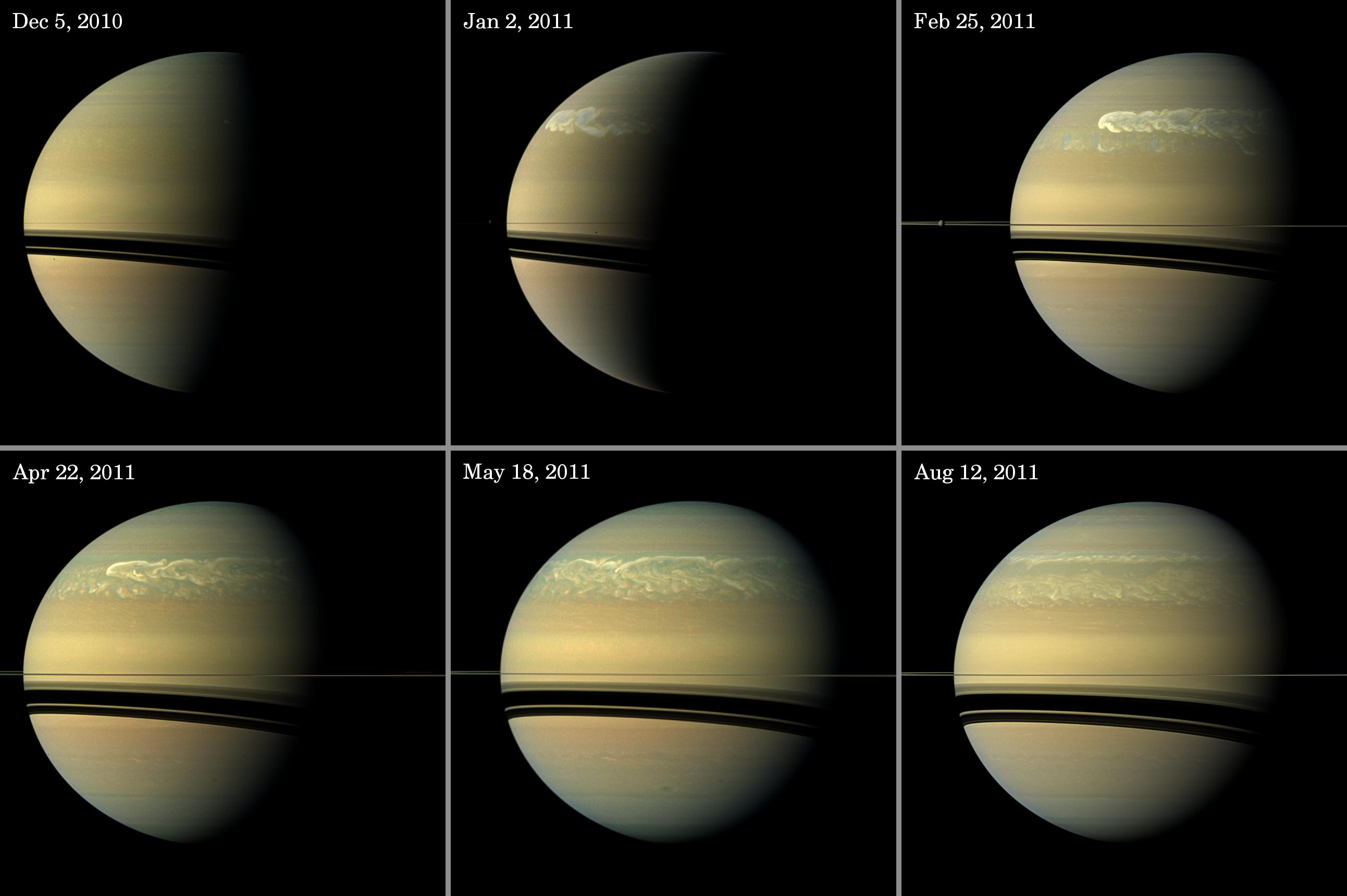
This series of images from NASA's Cassini spacecraft shows the development of the largest storm seen on the planet since 1990.
Northern Saturn Storm

This mosaic of images from NASA's Cassini spacecraft shows the trail of a great northern storm on Saturn raging in full force. Image released Jan. 31, 2013.
Saturn Storm Wind Directions
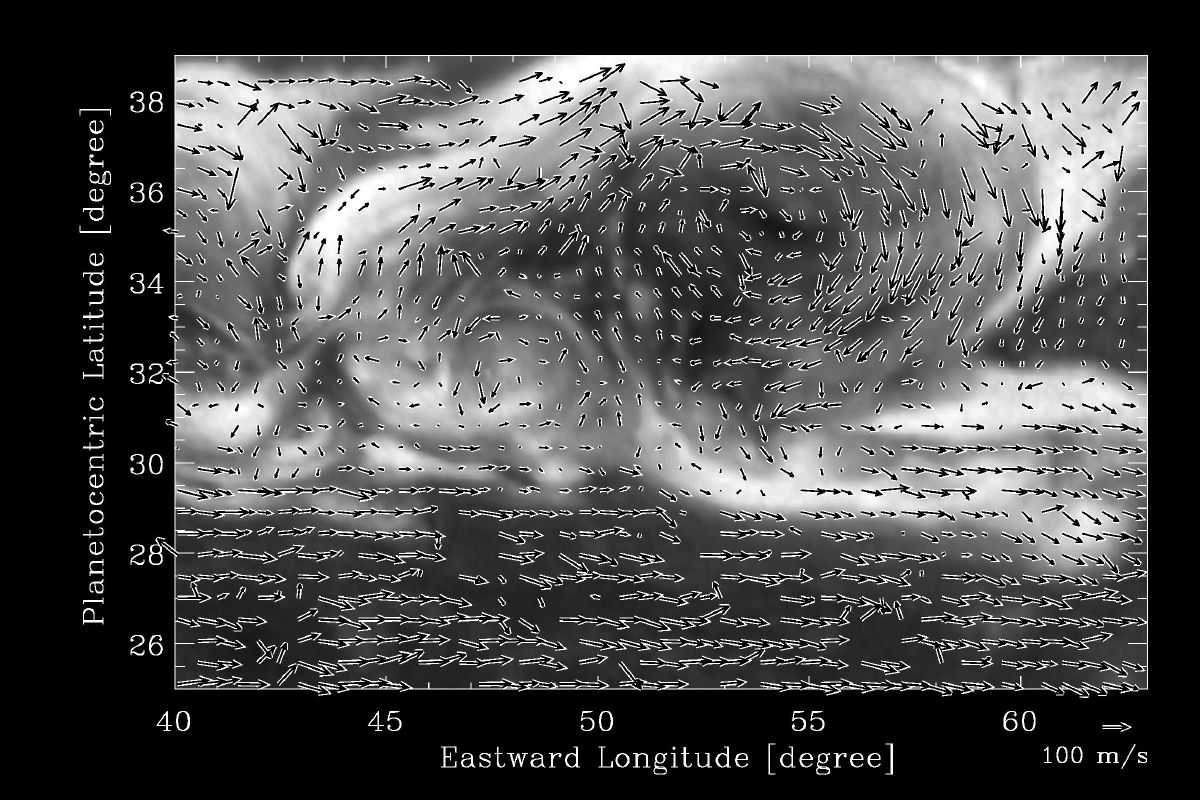
This image from NASA's Cassini spacecraft reveals the wind patterns within a large vortex that was spawned by a giant northern storm on Saturn. The arrows indicate the local direction of the winds. These data were obtained on Jan. 11, 2011. Image released Jan. 31, 2013.
Saturn's Storm Giant in Contrast

This mosaic of a giant storm in Saturn's northern hemisphere uses nearly true color filters, but the images were contrast enhanced. The result is a view that increases the visibility of features.
This mosaic covers an area ranging from about 18 degrees north latitude to 47 degrees north latitude. The views stretch the whole longitude range, passing through 360/0 degrees west longitude near the far right of the mosaics.
The images were obtained with the Cassini spacecraft narrow-angle camera on March 6, 2011 over about 11 hours (about a Saturnian day) at a distance of approximately 2 million miles (3.3 million kilometers) from Saturn and at a Sun-Saturn-spacecraft, or phase, angle of 83 degrees.
Saturn Storm Scenery
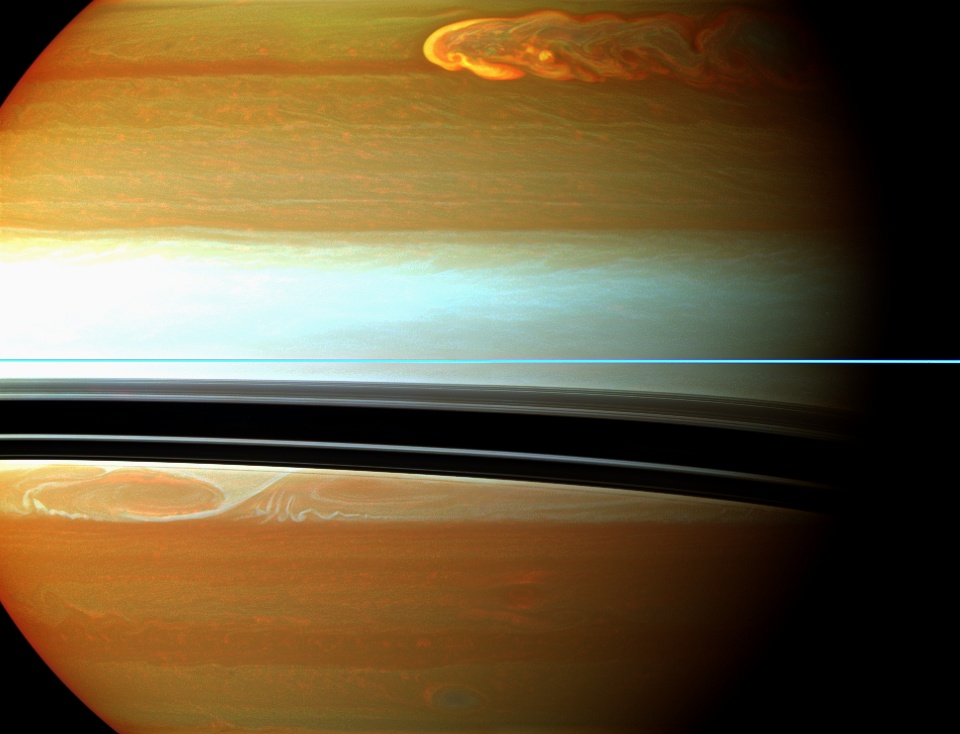
Saturn's northern storm marches through the planet's atmosphere in the top right of this false-color mosaic from NASA's Cassini spacecraft.
Saturn's atmosphere and its rings are shown here in a false color composite made from 12 images taken in near infrared light through filters that are sensitive to varying degrees of methane absorption. Red and orange colors in this view indicate clouds that are deep in the atmosphere. Yellow and green colors, most noticeable along the top edge of the view, indicate intermediate clouds. White and blue indicate high clouds and haze. The rings appear as a thin horizontal line of bright blue because they are outside of the atmosphere and not affected by methane absorption.
This view looks toward the northern, sunlit side of the rings from just above the ringplane.The images were taken on January 11, 2011, over about 50 minutes, at a distance of approximately 569,000 miles (915,000 kilometers) from Saturn.
Saturn Storm Head and Tail
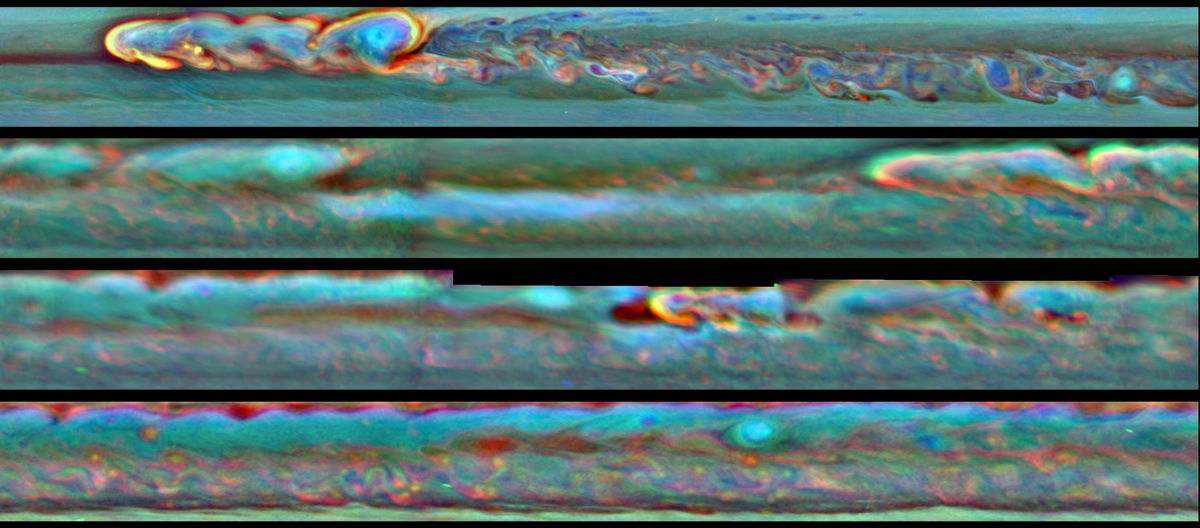
This set of images from NASA's Cassini mission shows the evolution of a massive thunder-and-lightning storm that circled all the way around Saturn and fizzled when it ran into its own tail. The storm was first detected on Dec. 5, 2010. Image released Jan. 31, 2013.
Breaking space news, the latest updates on rocket launches, skywatching events and more!
Birth of Saturn's Giant Storm
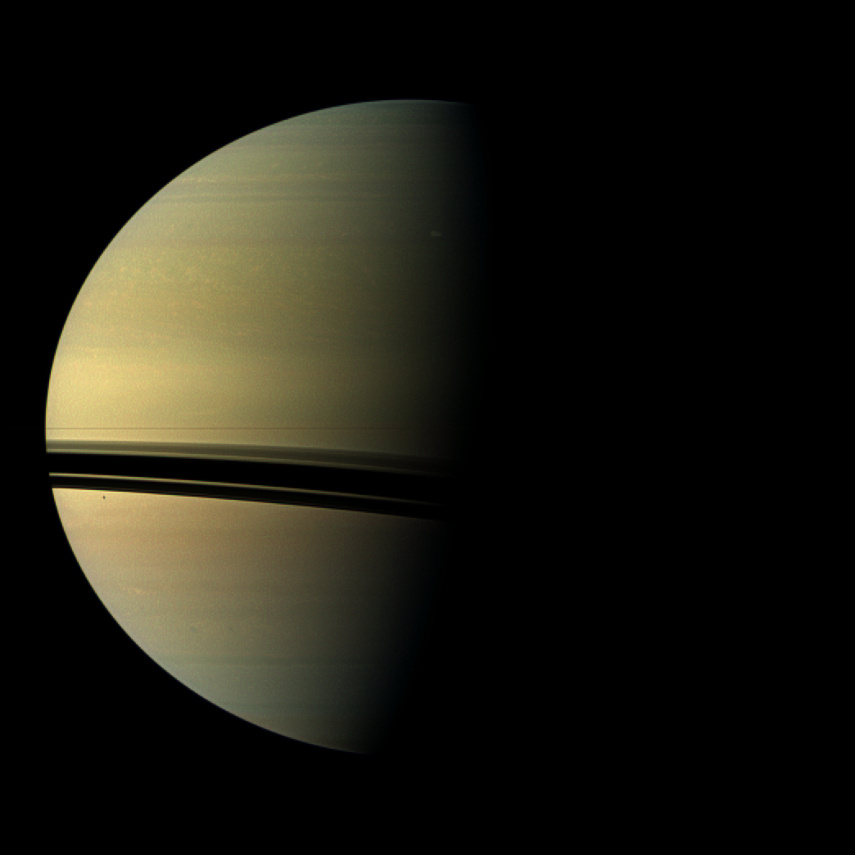
The largest storm to ravage Saturn in decades started as a small spot seen in this image from NASA's Cassini spacecraft on Dec. 5, 2010 -- the same day Cassini also detected frequent lightning signals.
The storm is visible as a spot on the terminator between night and day in the northern hemisphere. The spot appears slightly brighter than the surrounding clouds in an area about two-thirds of the way north of the equator.
Saturn Storm Images
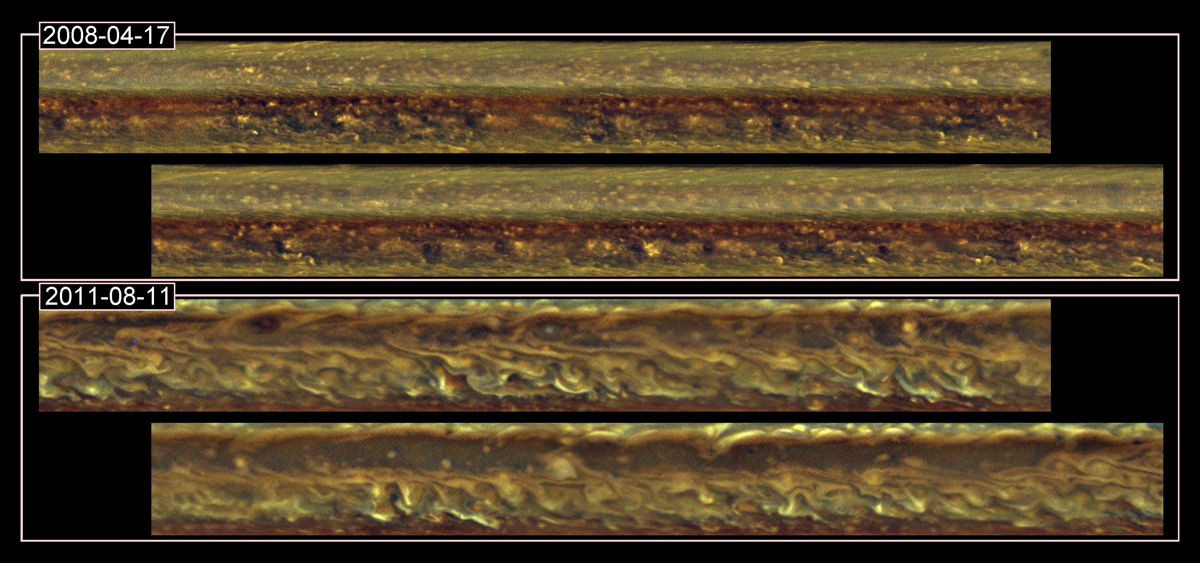
This set of images from NASA's Cassini spacecraft shows cloud patterns in a band around Saturn before a monstrous thunder-and-lightning storm erupted and again after the head of the storm had disappeared. Image released Jan. 31, 2013.
One Saturn Day: A Storm's Life
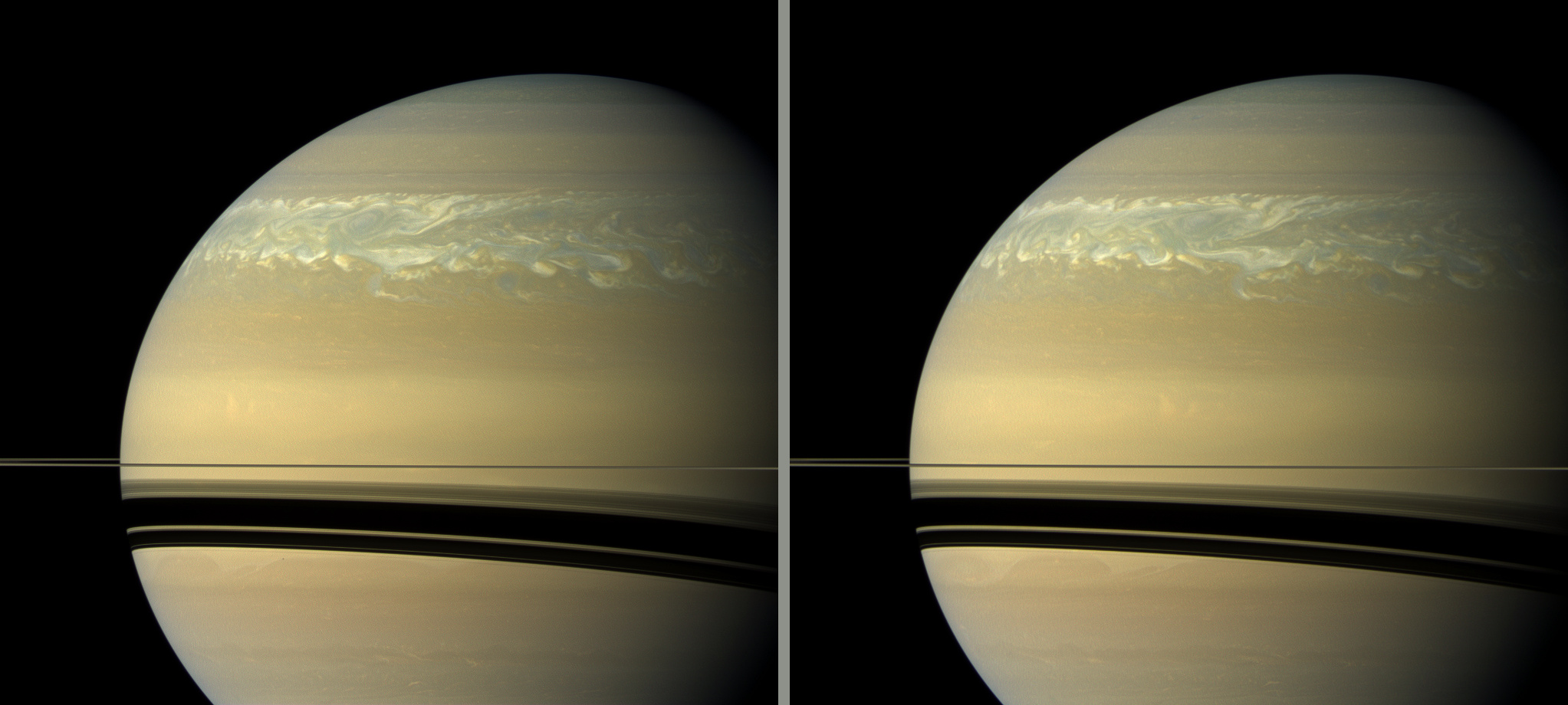
These two natural color views taken 11 hours -- one Saturn day -- apart by NASA's Cassini spacecraft help scientists measure wind speeds in the huge storm seen here in the planet's northern hemisphere.
The images for the view on the left were acquired with the Cassini spacecraft wide-angle camera on Feb. 23, 2011 at a distance of approximately 1.1 million miles (1.8 million kilometers) from Saturn. The images for the view on the right were acquired with the Cassini spacecraft wide-angle camera on Feb. 24, 2011 at a distance of approximately 1.2 million miles (1.9 million kilometers) from Saturn. Image scale is 64 miles (104 kilometers) per pixel in both views.
First Chapter of the Northern Saturn Storm

This mosaic of false-color images from NASA's Cassini spacecraft shows what a giant storm in Saturn's northern hemisphere looked like about a month after it began. Cassini's imaging camera obtained the images that went into this mosaic on Jan. 11, 2011. Image released Jan. 31, 2013.
Join our Space Forums to keep talking space on the latest missions, night sky and more! And if you have a news tip, correction or comment, let us know at: community@space.com.

Space.com is the premier source of space exploration, innovation and astronomy news, chronicling (and celebrating) humanity's ongoing expansion across the final frontier. Originally founded in 1999, Space.com is, and always has been, the passion of writers and editors who are space fans and also trained journalists. Our current news team consists of Editor-in-Chief Tariq Malik; Editor Hanneke Weitering, Senior Space Writer Mike Wall; Senior Writer Meghan Bartels; Senior Writer Chelsea Gohd, Senior Writer Tereza Pultarova and Staff Writer Alexander Cox, focusing on e-commerce. Senior Producer Steve Spaleta oversees our space videos, with Diana Whitcroft as our Social Media Editor.
